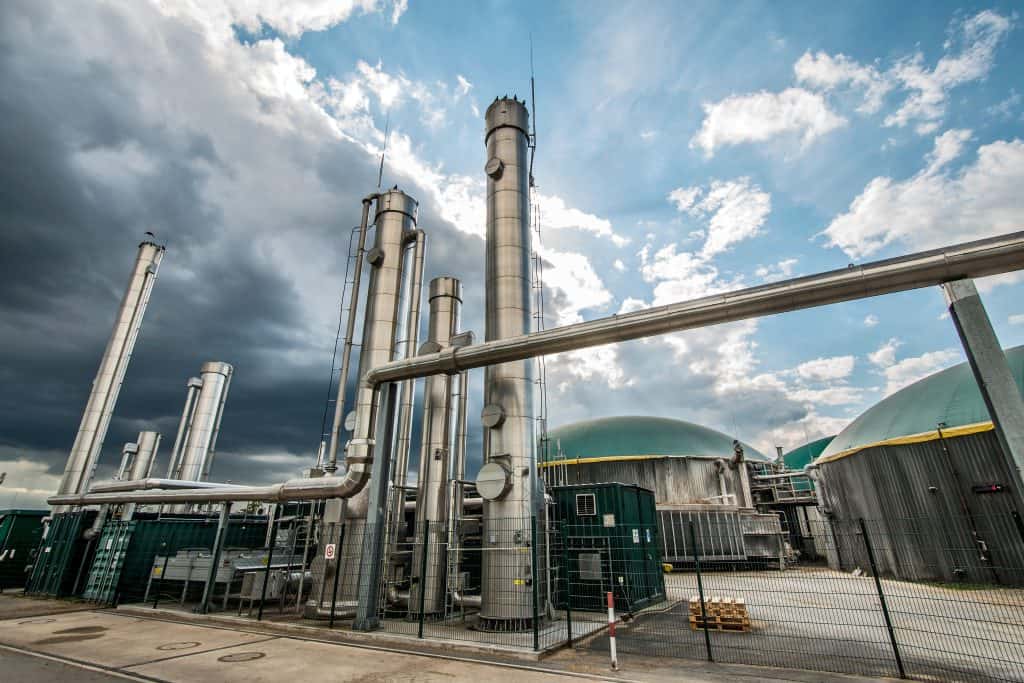
Reduce, reuse, recycle. That is the increasingly popular motto that reminds humans to be responsible in their use of natural resources—both renewable and nonrenewable. Biogas production for heat and power generation is one way to do so by turning waste materials into heat, fuel, and electricity. While many challenges face biogas efficiency, Bionetix® International has multiple biological-based treatments to make the most of biogas production.
Overcoming Biogas Inhibitors with BCP12™
An extremely limiting factor for biogas production is the fact that plant-based biomass, a common biogas feedstock, can inhibit the hydrolysis and acidogenesis phases of biogas production. Poor performance at these stages also limits final biogas production capacity. BCP12™ is an excellent companion to carry the microbial population through this critical period by adding beneficial bacteria and nutrients to the microbial population already in the biogas production area. These processes are respectively called bioaugmentation and biostimulation. BCP12™ is a bioaugmentation treatment tested at York University to evaluate its performance in the presence of inhibitors from plant-based biomass. During the test, BCP12™ was added to three different bacteria strains: Arthrobacter, Bacillus subtilis, and Pseudomonas putida. In each hydrolysate sample, the concentration of bacteria grew (by 30%, 53%, and 58%, respectively) compared to the controls, indicating the effectiveness of BCP12™ even in the presence of certain inhibitors.* BCP12™ is also a great addition to non-plant-based feedstocks, with side benefits of loosening and liquefying heavy grease, reducing unpleasant odors, and controlling FOG and grease cap buildup in anaerobic digesters.
Boosting Biogas Efficiency
Biogas production ultimately depends on the efficiency of the microbial population in the anaerobic digester, which in turn hinges on colony health and proper nutrition. If insufficient nutrients are available, biogas production efficiency will be down because microbes will not have the resources they need to grow, reproduce, and digest waste at a sufficient rate to keep up with biomass volume. Since the need for micronutrients is more often overlooked than the need for macronutrients (e.g., nitrogen and phosphorus), Bionetix® International has developed BIOGAS BOOSTER 3™ with three micronutrients selected to boost biogas production, process stability, and efficiency. BIOGAS BOOSTER 3™ was also among the products tested at York University and showed increased biogas production after only one week of treatment, with continuing benefits expected after acclimatization.* BIOGAS BOOSTER 3™ is a great way to stabilize production both under normal circumstances and when there is a large influx of waste in the anaerobic digester.
Biomass-Specific Treatment
While the above products can go a long way toward promoting a healthy microbial population for biogas generation, bioaugmentation with feedstock-specific bacterial blends can also be beneficial. For example, BCP57™ is designed for bioaugmentation of pulp and paper wastewater and can be added to boost biogas efficiency of plant-based feedstock, as well. BCP80™, designed to speed up digestion of animal waste, is a great addition to manure feedstock.
Increasing Biogas Efficiency in the Field
A good example of how biological treatment can boost biogas efficiency comes from two biogas power plants in Japan—one fed by livestock manure, the other with herbage waste. These plants were far below their production efficiency benchmark of 60% methane, 40% carbon dioxide, and less than 1% hydrogen sulfide and other impurities. With methane production at only 40%, the plants ended up generating 100 kW of power per generator instead of their 300 kW/generator capacity. Excess hydrogen sulfide was causing a malodor problem. BCP12™ and STIMULUS™ (another biostimulant) were added to the raw material at each plant, along with BCP80™ at the manure biogas plant and BCP57™ at the herbage plant. As a result, methane production increased to the targeted 60% methane with power production at 300 kW/generator. The odor problem also cleared up.
Don’t Let Waste Go to Waste
Biogas creation opens exciting doors to alternative forms of energy. What if waste that is produced every day could be harnessed to produce heat, fuel, and electricity for the benefit of society? Furthermore, what if natural biogas production inefficiencies could be overcome simply by adding the right microorganisms and nutrients to boost efficiency? A hint of the answer has already been given above. The rest of the answer is up to famers, municipalities, and entrepreneurs who will make use of the tools given them to transform waste into something valuable. Contact Bionetix® to get started on the journey to more efficient biogas production: https://www.bionetix-international.com/contact-us/
*York University NSERC Engage Project Report, “Novel Bacterial Blend to Enhance Biomethanation of Municipal Sewage Sludge,” 11 December 2020. Prepared by Prof. Brar’s Team: Dr. Bikash Tiwari, Rahul Saini, and Mona Chaali.
Keywords: reduce waste, biogas efficiency, what biogas is used for, which bacteria produce biogas, biogas production for electricity, biogas for fuel, reduce reuse recycle, Bionetix, bioaugmentation, alternative forms of energy
Need a High-Resolution Photo? Please Visit: www.cortecadvertising.com
For a PDF version please click here.
